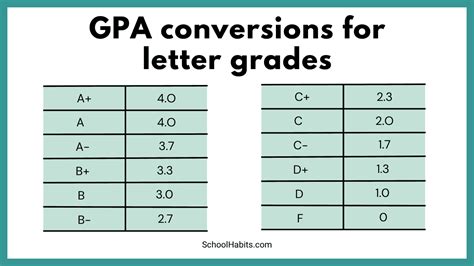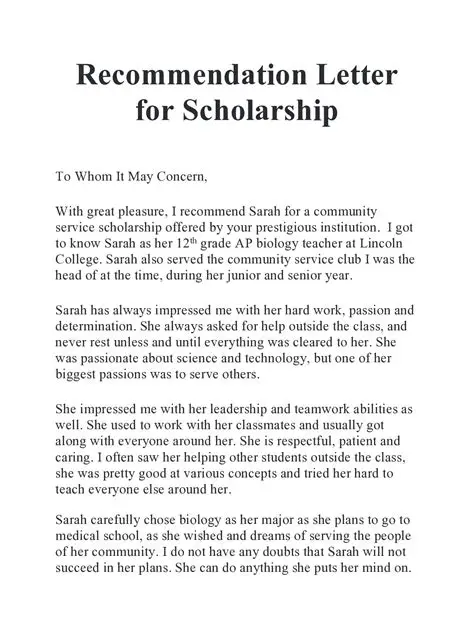Introduction

The success of a scholarship application hinges largely on the quality of the reference letters that accompany it. A well-written reference letter can highlight an applicant’s strengths, skills, and academic achievements, making them stand out from the crowd. This comprehensive guide provides a step-by-step approach to crafting effective reference letters that will boost an applicant’s chances of receiving the coveted scholarship.
Understanding the Importance of Reference Letters
According to the National Association of Secondary School Principals (NASSP), reference letters play a crucial role in scholarship evaluations. Admissions committees rely on these letters to gain insights into an applicant’s character, work ethic, and potential. A strong reference letter can corroborate the applicant’s own claims and provide a credible assessment of their abilities.
Choosing the Right Reference
The choice of reference is pivotal to the effectiveness of the letter. Ideal references are individuals who have a close working relationship with the applicant, such as teachers, professors, employers, or mentors. These individuals should be familiar with the applicant’s academic achievements, work experience, and personal qualities.
Crafting a Stellar Reference Letter
1. Start with a Formal Salutation:
Begin the letter with a formal salutation, such as “Dear [Scholarship Committee Chair’s Name]” or “To Whom It May Concern.”
2. Introduce the Applicant:
Immediately introduce the applicant by their full name and mention their academic standing or work experience. This provides context for the reference letter.
3. State Your Relationship with the Applicant:
Clearly state your relationship with the applicant and the duration of your association with them. This establishes your credibility as a reference.
4. Highlight Specific Examples:
Provide specific examples that showcase the applicant’s skills, abilities, and character. Avoid general statements or vague claims. Instead, focus on quantifiable results and measurable achievements.
5. Share Personal Observations:
Beyond academic or work-related examples, include personal observations that demonstrate the applicant’s work ethic, initiative, and interpersonal skills. These observations can add depth to the letter.
6. Address the Scholarship Criteria:
If available, review the scholarship criteria and tailor your letter accordingly. Highlight the applicant’s qualities that align with the scholarship requirements.
7. End with a Strong Conclusion:
Summarize the applicant’s strengths and enthusiastically recommend them for the scholarship. Encourage the scholarship committee to consider the applicant’s application favorably.
8. Proofread Carefully:
Before submitting the letter, proofread it thoroughly for grammar, spelling, and formatting errors. A polished letter conveys professionalism and attention to detail.
Creating a Reference Letter Template
[Your Name]
[Your Position]
[Your Organization]
[Your Address]
[Your Phone Number]
[Your Email Address]
[Date]
[Scholarship Committee Chair’s Name]
[Scholarship Committee Address]
Dear [Scholarship Committee Chair’s Name],
I am honored to write this letter of reference for [Applicant’s Name], a [academic standing or work experience] who I have known for [duration of association].
As [Your Relationship with the Applicant], I have had the opportunity to observe [Applicant’s Name]’s exceptional abilities firsthand. Specifically, [Applicant’s Name] has consistently demonstrated:
- [Skill or Ability #1]: [Specific Example #1]
- [Skill or Ability #2]: [Specific Example #2]
- [Skill or Ability #3]: [Specific Example #3]
Beyond their academic or work achievements, [Applicant’s Name] possesses a strong work ethic, a positive attitude, and a genuine desire to learn and grow. They have always been willing to go the extra mile and have taken initiative to seek out opportunities for professional development.
In my opinion, [Applicant’s Name] meets all the criteria for the [Scholarship Name]. Their academic record, work experience, and personal qualities make them an ideal candidate for this scholarship.
I highly recommend [Applicant’s Name] for the [Scholarship Name]. I am confident that they would make a valuable contribution to your program and beyond.
Thank you for your time and consideration.
Sincerely,
[Your Signature]
[Your Typed Name]
Table 1: Reference Letter Template Breakdown
| Section | Description |
|---|---|
| Salutation | Formal greeting to the scholarship committee |
| Introduction | Introduce the applicant and mention your relationship |
| Relationship Statement | State the duration and nature of your association |
| Specific Examples | Provide quantifiable examples of the applicant’s abilities |
| Personal Observations | Share insights into the applicant’s work ethic and character |
| Scholarship Alignment | Highlight the applicant’s qualities that align with the scholarship criteria |
| Conclusion | Summarize the applicant’s strengths and recommend them |
Table 2: Effective Strategies for Writing a Strong Reference Letter
| Strategy | Description |
|---|---|
| Use strong action verbs | Avoid passive language and use active verbs to convey the applicant’s accomplishments |
| Quantify results | Whenever possible, provide measurable outcomes to support your statements |
| Be specific | Provide specific examples and avoid general statements |
| Avoid clichés | Opt for original language and avoid using overused phrases |
| Personalize the letter | Tailor the letter to each applicant and highlight their unique strengths |
| Proofread carefully | Review the letter thoroughly for errors to ensure a polished impression |
Table 3: Why Reference Letters Matter for Scholarships
| Reason | Impact |
|---|---|
| Provide credibility | Verify the applicant’s claims and support their application |
| Showcase skills and abilities | Highlight the applicant’s strengths that may not be evident in their application |
| Enhance application competitiveness | Distinguish the applicant from other candidates and increase their chances of success |
| Demonstrate potential | Provide insights into the applicant’s future goals and potential |
| Enhance applicant’s reputation | Positive reference letters add to the applicant’s overall credibility and reputation |
Table 4: Pros and Cons of Different Reference Letter Format
| Format | Pros | Cons |
|---|---|---|
| Traditional letter format | Professional and formal | Requires more time and effort to create |
| Electronic reference letter | Convenient and time-saving | May not convey the same level of formality |
| LinkedIn recommendation | Easy to write and share | Limited customization options |
Conclusion
Writing a strong reference letter for a scholarship is an essential aspect of the application process. By following the tips and strategies outlined in this guide, you can create effective letters that will highlight the applicant’s strengths and increase their chances of success. Remember, a well-written reference letter can be the difference between being accepted or rejected for a scholarship, so approach the task with care and attention to detail.
